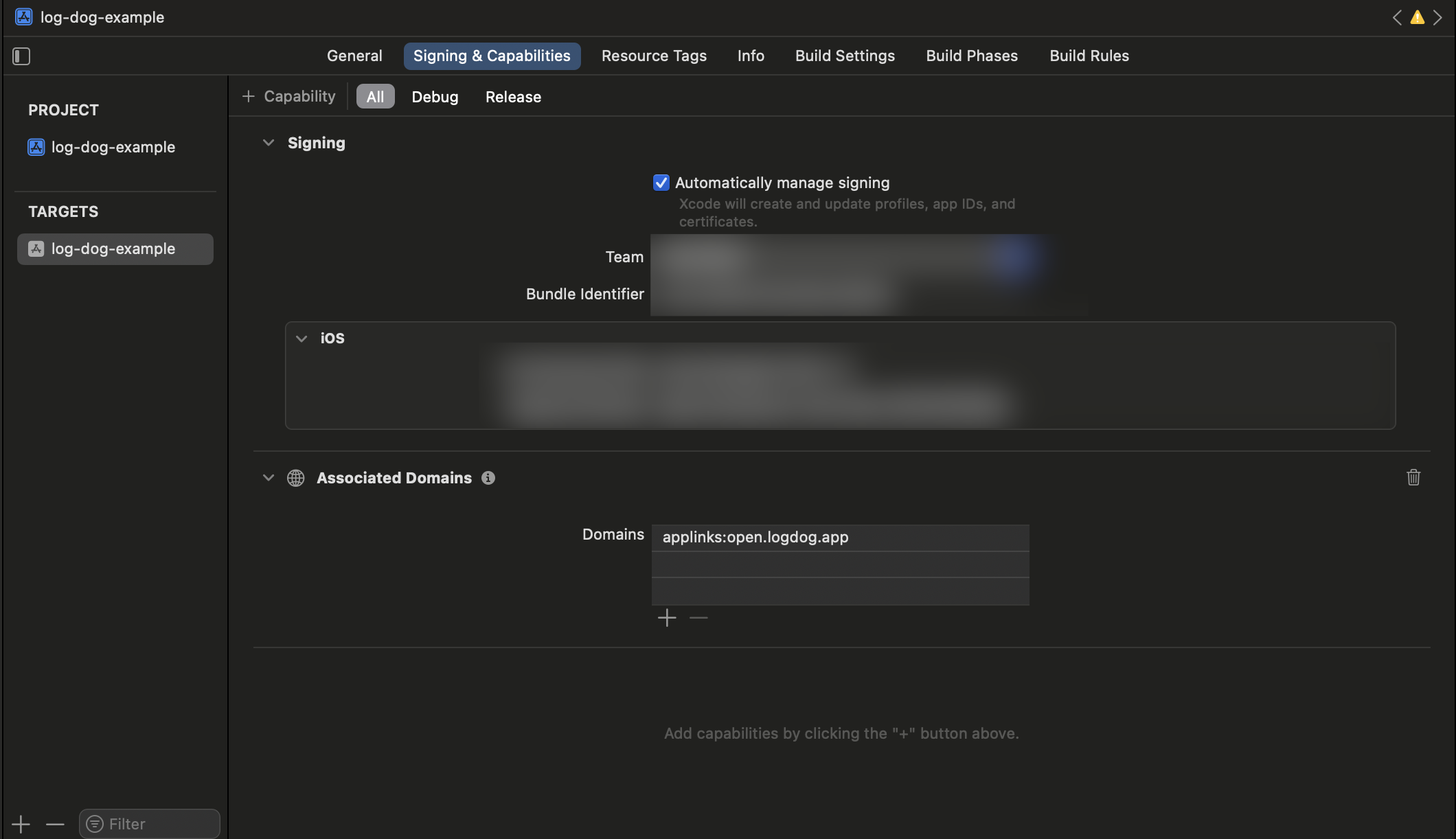Production Usage
It is not recommended to activate LogDog in production for each user of your application. Instead we provide several ways to activate it in production in a simple way.
- Trigger via a hidden setting/button
- Trigger via Deeplink
Enabling LogDog for all of your users can increase your data usage and therefore lead to additional cost due to exhausting your quota. Please keep that in mind.
Trigger via a hidden setting
With this simple approach LogDog can be activated/deactivated whenever it's needed. If your application has already a hidden Debug Window or Menu we recommend placing this button in there. To deactivate LogDog just call start() again and set every option of the config to false.
struct ContentView: View {
@State private var tapCount = 0
var body: some View {
VStack {
Button("Version 1.0.0") {
tapCount += 1
if tapCount >= 3 {
tapCount = 0
let config = LogDogConfig(apiKey: "YOUR_API_KEY", logs: true, prints: true, network: true, events: true)
LogDog.initialize()
LogDog.start(config:config)
LogDog.i("Hello from LogDog!")
}
}
}
}
}
Configure Deeplinks (Universal Links)
One easy way to achieve an on demand activation are universal links (also known as deeplinks).
This scenario can be useful if a user of your application needs remote support. Then LogDog can be enabled with a simple click on a link shared via email.
You can enable Deeplinks by opening your target in XCode and then go to "Signing & Capabilities".
Then scroll down to "Associated Domains" and add the following entry:
applinks:open.logdog.app

To handle a clicked universal link the following lines are required:
With SwiftUI:
var body: some Scene {
WindowGroup {
ContentView()
.onOpenURL { url in
if url.path == "/start-log-dog" {
LogDog.initialize()
let config = LogDogConfig(apiKey: "YOUR_API_KEY", logs: true, network: true, events: true)
LogDog.start(config: config)
}
if url.path == "/stop-log-dog" {
let config = LogDogConfig(apiKey: "YOUR_API_KEY", logs: false, network: false, events: false)
LogDog.start(config: config)
}
}
}
}
With UIKit:
func application(_ application: UIApplication,
continue userActivity: NSUserActivity,
restorationHandler: @escaping ([UIUserActivityRestoring]?) -> Void) -> Bool {
if userActivity.activityType == NSUserActivityTypeBrowsingWeb,
let url = userActivity.webpageURL {
if url.path == "/start-log-dog" {
LogDog.initialize()
let config = LogDogConfig(apiKey: "YOUR_API_KEY", logs: true, network: true, events: true)
LogDog.start(config: config)
}
if url.path == "/stop-log-dog" {
LogDog.initialize()
let config = LogDogConfig(apiKey: "YOUR_API_KEY", logs: false, network: false, events: false)
LogDog.start(config: config)
}
}
return true
}
You can then share the link: open.logdog.app/start-log-dog with a user seeking support. Feel free to change the path or domain to something custom. Please note that a custom domain requires additional steps to get the universal link working.
To find out more on universal links please check here
Tip: You can also pass a custom device name like open.logdog.app/start-log-dog?device-name=User123 with the universal link. This will then later enable you to assign a memorable name for the device in LogDog.
LogDog.setCustomDeviceName(name: "User123")
Support
If you have questions send us an email via support@logdog.app. We are happy to help!